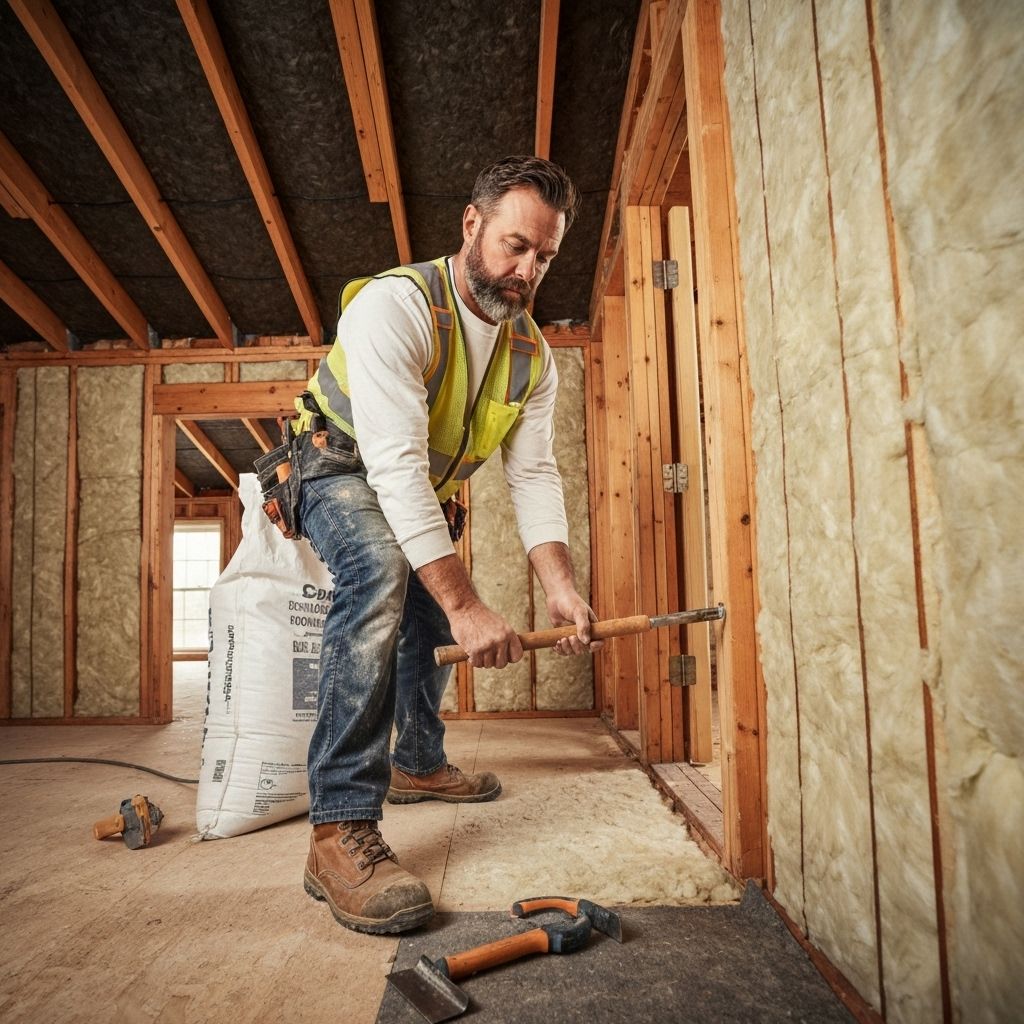DIY Residential Thermal Insulation Tasks: An Systematic Guide

Insulating your home is an effective method to improve your living space, reduce energy costs, and boost the overall coziness of your home. Whether facing frigid winter temperatures or scorching summer heat, proper insulation can greatly improve how your home feels. Unfortunately, a lot of homeowners neglect this crucial aspect of home maintenance, leading to wasted energy and money. This guide aims to inform you with the tools and step-by-step instructions to handle DIY home insulation projects with ease.
From understanding the different insulation materials available to spotting potential areas for improvement in your house, we'll cover everything you need to understand. You will learn how to evaluate your home's insulation, determine if an upgrade is needed, and discover the benefits of different types of insulation, including batt and blown-in options. With our practical advice and expert tips, you will be armed to transform your home into a more energy-efficient and comfortable environment. Now let's dive into the essential projects that can make a lasting impact on your home's efficiency and value.
Grasping Home Insulation
Home insulation has a crucial role in providing a cozy living environment and enhancing energy efficiency. By minimizing thermal transfer, insulation helps keep your home heated in the winter and cool in the summer. This energy conservation not just leads to reduced utility bills but additionally contributes to a more sustainable lifestyle by reducing overall energy consumption. Learning how insulation works is essential for taking informed decisions about your home's energy consumption.
Different kinds of insulation materials are accessible, each with diverse properties, benefits, and disadvantages. From batting attic insulation , which consists of pre-cut panels of fiber, to loose-fill insulation that’s ideal for hard-to-reach areas, choosing the right type relies on your specific needs and the areas you plan to insulate. Additionally, insulation is rated by R-values, which assess heat resistance; a greater R-value means superior insulation effectiveness. Becoming familiar yourself with these alternatives will empower you to select the most suitable solution for your home.
The method of installation can differ greatly based on the type of insulation and the locations being insulated. Appropriate insulation installation is crucial to maximize its efficiency, ensuring there are no gaps or leaks that could undermine its performance. Furthermore, think about air sealing your home prior to insulating to enhance energy efficiency further. Understanding these foundational elements of home insulation prepares you for further DIY projects and improvements in upcoming sections.
Do-It-Yourself Insulation Tasks
Taking on do-it-yourself insulation tasks can greatly improve your home's energy efficiency and comfort. Begin with checking areas that might need insulation, such as lofts, partitions, and crawl spaces. Make sure you have the correct tools and materials based on your chosen insulation method, whether that’s batts, blown-in, or spray foam. R-values are essential in selecting the correct insulation, so ensure to understand the compliance requirements for your region.
Once you've determined the areas needing attention, the next step is properly preparing those spaces. This consists of air sealing to prevent drafts, which can hinder your insulation efforts. Use caulk, weather stripping, or foam sealant to close gaps around windows, doors, and other openings. Correct preparation sets a solid foundation for successful insulation installation, enhancing energy savings while keeping your home comfortable year-round.
After preparation, you can start the installation process for your chosen insulation method. For example, when insulating an attic, ensure proper ventilation to avoid moisture accumulation. If choosing blown-in insulation, adhere to the producer's guidelines for depth and distribution. Remember to wear protective gear during installation. With attention to detail, your DIY insulation projects can lead to substantial improvements in your home’s functionality and value.
Benefits of Effective Insulation
Adequate insulation delivers notable energy savings, helping homeowners lower their heat and air conditioning costs. When a home is adequately insulated, it retains warmth in the winter season and remains cool during the hot season, minimizing the need for constant heat or air conditioning. This efficiency translates into decreased utility costs over time, making insulation a worthwhile investment for both current and upcoming savings.
In addition to energy savings, proper insulation contributes to enhanced comfort inside the home. Insulation serves as a shield against environmental temperature changes, ensuring that indoor spaces are cozy and pleasant regardless of the conditions outside. It can assist eliminate cold drafts and cold corners, creating a more uniform temperature throughout the home. Homeowners will value the improved comfort level, especially during extreme weather conditions.

Another key benefit of insulation is its influence on real estate value. A adequately insulated home not only performs better in terms of energy savings but is also considered positively in the real estate market. Possible buyers often see quality insulation as a critical feature, realizing that it leads to long-term savings and comfort. Making attic insulation in effective insulation can boost your home’s market value, making it a beneficial decision for homeowners who may look to sell in the long run.
